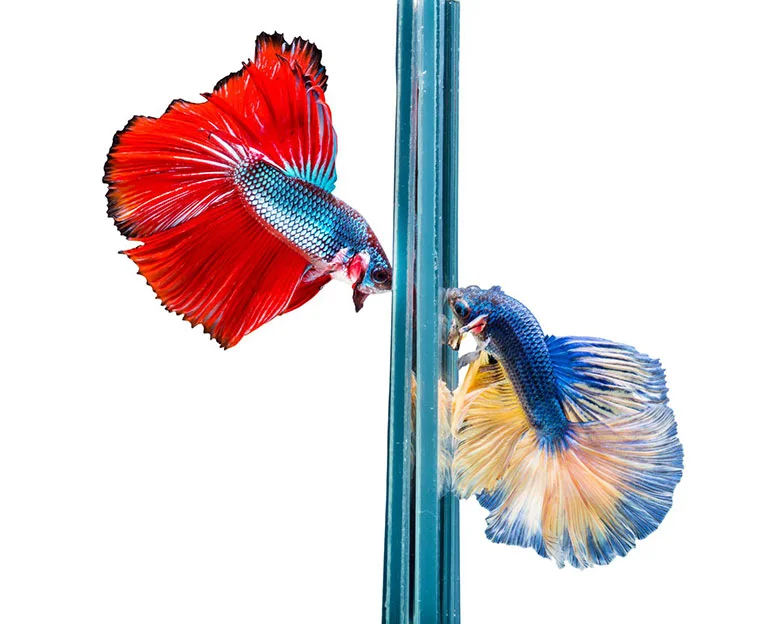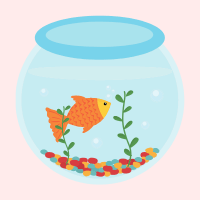Are you a betta fish owner looking for ways to provide the best possible care for your aquatic friend? Look no further than the Ultimate Betta Care Guide: Optimal Environment.
In this comprehensive guide, written by experienced aquarium keeper Katherine Morgan, you’ll learn everything you need to know about creating the perfect environment for your betta fish to thrive. From the ideal tank size to the recommended water parameters, this guide covers all the essentials of setting up a healthy and happy home for your betta.
You’ll also discover the importance of proper feeding and maintenance, as well as learn about the common mistakes to avoid when caring for these fascinating fish. Whether you’re a beginner or a seasoned pro, this guide is a must-read for anyone looking to provide their betta with the best possible care.
So, let’s dive in and explore the world of betta fish care together!
Key Takeaways
- Bettas require a 5-gallon tank minimum with a filter, heater, and tight-fitting lid, as well as inert substrate and soft, acidic water.
- Ideal water parameters for bettas are 75°-81°F, 0 ppm ammonia and nitrite, 20 ppm nitrate, 3-4 dGH GH, 3-5 dKH KH, pH 6.5-7.5.
- Bettas should be fed a high protein, fiber diet and overfeeding can lead to constipation and death.
- Male bettas cannot be kept together, but several female bettas can be kept in a 10-gallon tank with good tank mates like small plecos, peaceful community fish, bottom dwellers, and snails.
Betta Fish Basics

If you’re new to betta fish care, it’s important to know the basics. Betta fish are native to Southeast Asia and live in slow-moving, dark brown water. They are part of the suborder Anabantoidei and have a labyrinth organ for breathing in low oxygen environments.
As for their living conditions, a 5-gallon tank minimum is necessary with proper filtration and heating. Also, male bettas cannot be kept together as they are highly territorial and will fight to the death. Breeding bettas can be difficult and requires specific conditions, so it’s recommended for experienced aquarists.
One of the most appealing aspects of betta fish is their color variations. These stunning fish come in a wide range of colors including red, blue, green, purple, and black. Some even have iridescent scales or unique patterns.
However, it’s important to note that certain color variations may be more prone to health issues. For example, bettas with white or light-colored scales may have a higher risk of developing tumors. As with any pet, it’s important to thoroughly research and understand the specific care requirements for your betta fish.
Tank Setup Essentials
To create a cozy and comfortable home for your betta buddy, it’s crucial to include some tank setup essentials. These include a tight-fitting lid, inert substrate, and live plants.
Bettas are known for their jumping abilities and can easily escape an open tank, so a lid is necessary to prevent any accidents. Inert substrate, such as sand or gravel, is important for bettas because they like to dig and can injure themselves on sharp or rough surfaces. Live plants not only provide hiding spots for your betta but also help improve water quality by absorbing nitrates and producing oxygen.
When it comes to decor options, it’s important to choose items that won’t snag your betta’s delicate fins. Smooth rocks and driftwood are great options, but avoid any sharp or pointed objects. It’s also important to avoid any decorations with sharp edges or small openings that could trap your betta.
As for water changes, it’s recommended to do a partial water change of 25-50% every week. This helps maintain a healthy environment for your betta by removing any excess waste or toxins. It’s important to use a water conditioner to remove any chlorine or chloramines from tap water before adding it to the tank.
By following these tank setup essentials and water change schedule, you can provide your betta with a comfortable and healthy home.
Feeding and Nutrition
You can ensure your betta fish’s health and happiness by providing them with a balanced diet and proper nutrition. One option for betta pellets is to choose high-quality brands that offer a variety of options, such as color-enhancing, protein-rich, and fiber-filled pellets.
It’s important to note that overfeeding can lead to constipation and other health issues, so be sure to feed your betta fish two small meals a day. In addition to prepared betta pellets, you can also provide your betta fish with natural food alternatives such as live or frozen foods.
These options include bloodworms, brine shrimp, and daphnia. Another option is to add Indian almond leaves to your betta’s tank, as they mimic the natural habitat and have health benefits. By providing your betta fish with a balanced diet and nutrition, you can ensure that they live a long and healthy life.
Tank Mates and Compatibility
Get ready to add some new friends to your betta fish’s tank by learning about compatible tank mates and how to ensure a peaceful environment.
It’s important to choose tank mates that won’t nip at your betta’s fins or outcompete them for food. Small plecos, peaceful community fish, bottom dwellers, and snails make great tank mates for bettas. However, fancy guppies and certain species of gouramis should be avoided as they can be aggressive towards bettas.
When introducing new fish to your betta’s tank, make sure to quarantine them first to prevent the spread of diseases. Slowly acclimate them to the tank water temperature and avoid adding too many new fish at once to prevent overcrowding. Keep an eye on their behavior and make sure they are not showing signs of aggression towards your betta.
Remember, bettas are territorial and prefer to have their own space, so it’s important to choose compatible tank mates for a peaceful environment.
Frequently Asked Questions
What Are Some Common Diseases That Betta Fish Can Get And How Can They Be Prevented Or Treated?
Betta fish are prone to diseases like fin rot, velvet, and ich, which can be prevented by maintaining good water quality, providing a balanced diet, and avoiding overcrowding. Medication options include aquarium salt, anti-fungal/anti-bacterial treatments, and quarantine.
Can Betta Fish Be Kept With Other Types Of Aquatic Animals Besides Fish, Such As Snails Or Shrimp?
Betta fish can be kept with snails or shrimp as tankmates, but compatibility factors must be considered. Snails are generally peaceful, while shrimp may be eaten. Best practices include providing hiding spots and monitoring behavior. Case studies show success and failures.
What Are Some Common Mistakes That New Betta Owners Make And How Can They Be Avoided?
Common mistakes new betta owners make include overfeeding, inadequate tank size, poor water quality, and aggressive tank mates. Avoiding these can be done through research, proper care, and choosing suitable tank mates.
Are There Any Natural Remedies Or Supplements That Can Enhance The Health And Well-Being Of Betta Fish?
Natural remedies and supplements like Indian almond leaves and aquarium salt can enhance the health and well-being of betta fish. These remedies can promote healing, reduce stress, and improve water quality when used correctly.
How Can You Tell If A Betta Fish Is Male Or Female And What Are Some Behavioral Differences Between The Two Genders?
To identify Male vs. Female Betta, look for longer fins on males and a rounder, shorter body on females. Males are more colorful and aggressive while females are more subdued. Signs of a Healthy Betta include active swimming, clear eyes, and vibrant coloring.
Take Action and Create a Beautiful Betta Habitat for Your Fish Today!
Congratulations on making it to the end of this ultimate betta care guide! By now, you should have a solid understanding of what it takes to create the perfect environment for your betta fish.
You know that a tank size of at least 5 gallons is ideal, and that a heater and filter are essential for maintaining proper water parameters. You’ve learned about the importance of feeding your betta a balanced diet and keeping up with regular tank maintenance. And of course, you now know which tank mates are compatible with bettas and which to avoid.
By implementing the tips and guidelines outlined in this guide, you can rest assured that you’re providing your betta with the best possible care. Not only will your fish thrive in a healthy and comfortable environment, but you’ll also be able to enjoy the beauty and personality of these fascinating creatures for years to come.
Imagine coming home after a long day and being greeted by your happy and healthy betta fish swimming gracefully in their pristine tank. The vibrant colors and playful personality of your betta will bring a smile to your face and a sense of calm to your mind.
You’ll feel fulfilled knowing that you’re providing your fish with the best possible care, and you’ll take pride in the beautiful aquatic world you’ve created. So go ahead and put your newfound knowledge into action. Your betta fish will thank you for it, and you’ll reap the rewards of a truly beautiful and rewarding hobby.

